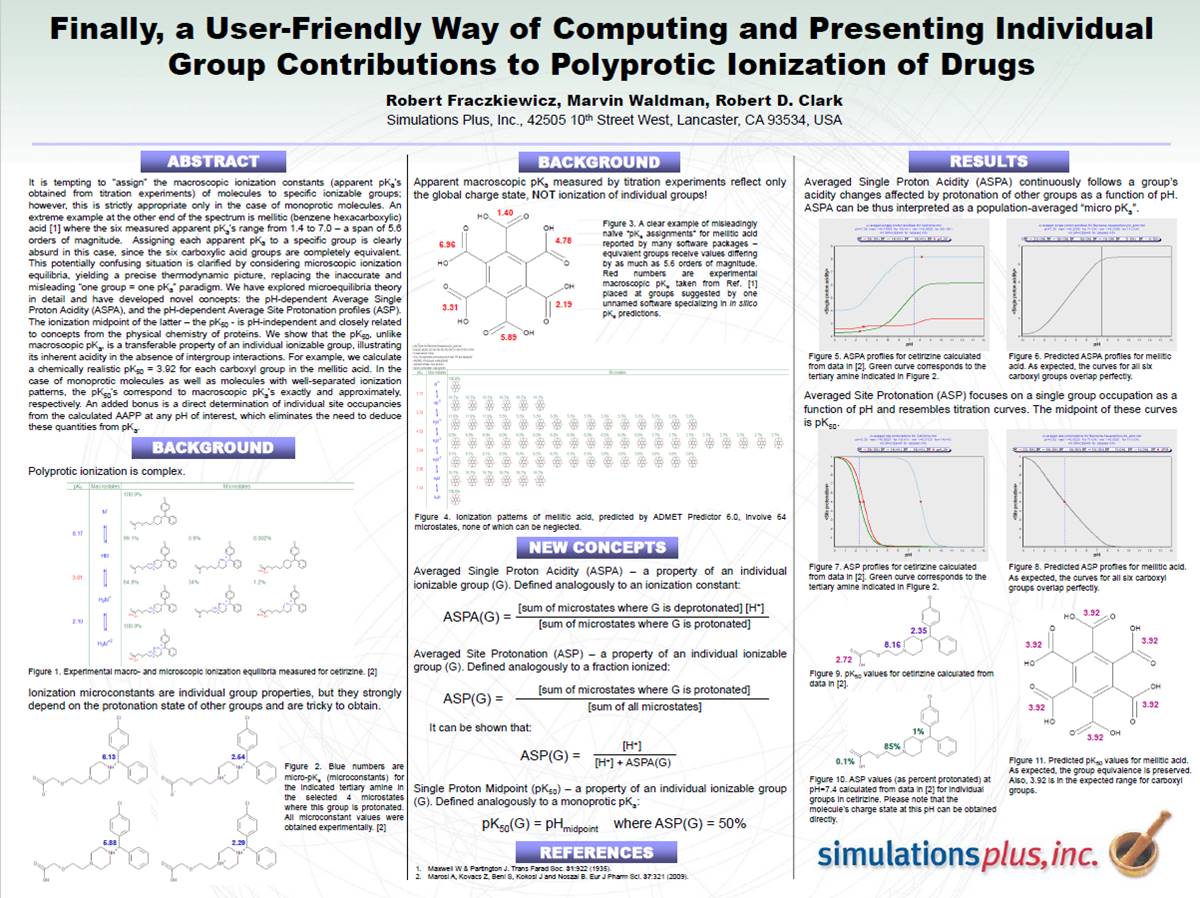Susan Cain recently wrote about the advantages and limitations of team work versus going it alone in the New York Times Sunday Review.

Small-molecule inhibitors of the androgen receptor
The present invention provides a method of inhibiting an androgen receptor by administering a compound of Formula I: or a compound of Formula II: wherein R1, R2, R3 and...

Provisional Biopharmaceutical Classification of Some Common Herbs Used in Western Medicine
The aim of this study was to classify some markers of common herbs used in Western medicine according to the Biopharmaceutical Classification System (BCS).

Simulations Plus Announces Cash Dividend
Board of directors declares an ongoing quarterly dividend of $0.05 per share

Thinking about thinking.
In a podcast called Thinking About Thinking, three eminent scientists discuss the ways humans think. All three have interesting and useful insights. I recommend this podcast to anyone responsible for managing Pharma R&D teams or for anyone looking for new ways to improve team performance, especially in knowledge-intensive research efforts.

George Steiner, a certain idea of knowledge.
George Steiner:
Our world is shrinking. Science is becoming inaccessible to us. Who can understand the latest innovations in genetics, astrophysics and biology? Who can explain them to the profane? Knowledge no longer communicates; writers and philosophers in our day are incapable of enabling us to understand science. At the same time, the scope of imagination in science is dazzling. How can we claim to speak of human consciousness if we overlook what is most daring and imaginative? I am concerned by what it means to be literate today. Is it possible to be literate if you do not understand non-linear equations?

Simulations Plus Reports First Quarter FY2012 Financial Results
Net sales increase 9.6% to first quarter record $2.248 million; Net income up 30.9% to $755,000

Simulations Plus Sets Date for 1st Quarter 2012 Earnings Release and Conference Call
Conference Call to be on Wednesday, January 18, at 4:15 PM ET

The age of the smart machine.
Frances Fukuyama had some interesting things to say in the current issue of Foreign Affairs about the implications of globalization and technical innovation for our children’s future.*

Finally, a User-Friendly Way of Computing and Presenting Individual Group Contributions to Polyprotic Ionization of Drugs
It is tempting to “assign” the macroscopic ionization constants (apparent pKa ‘s obtained from titration experiments) of molecules to specific ionizable groups; however, this is strictly appropriate only…

Simulations Plus to Present at the Sidoti & Company, LLC Semi-Annual New York Micro-Cap Conference
Leader in Drug Discovery and Development Simulation and Modeling Software to Present on January 9, 2012; Sidoti NY Micro Cap Conference 2012

Lions and tigers and bears, oh my! Three barriers to progress in computer-aided molecular design
The computational chemistry and cheminformatics community faces many challenges to advancing the state of the art.

Simulations Plus Reports Preliminary Revenues for First Fiscal Quarter FY2012
Revenues Increase 9.5% for New Record 1st Quarter, Cash up 40%

Simulations Plus Reports FY2011 and Fourth Quarter FY2011 Financial Results
Fiscal Year Pharmaceutical Software and Services Up 14.7%, EPS Up 29.3%

Simulations Plus Sets Date for 4th Quarter and Fiscal Year 2011 Earnings Release and Conference Call
Conference Call to be on Thursday, December 1, 2011 at 4:30 PM EST

Simulations Plus Signs Stock Purchase Agreement for Sale of Words+ Subsidiary
Prentke Romich Company to Acquire Subsidiary and Continue Operations

Effect of gastric pH on the pharmacokinetics of a BCS Class II compound in dogs: Utilization of an artificial stomach and duodenum dissolution model and GastroPlus™ simulations to predict absorption
Dogs are one of the most commonly used non-rodent species in toxicology studies and are known to have basal stomach pH ranging from 2 to 7 in the fasted state.

Application of PBPK modelling in drug discovery and development at Pfizer
Early prediction of human pharmacokinetics (PK) and drug–drug interactions (DDI) in drug discovery and development allows for more informed decision making.

Physiologically-Based Pharmacokinetic (PBPK) Model for Prediction of Midazolam Pharmacokinetics After Intranasal Administration in Children
To predict midazolam absorption and pharmacokinetics (PK) after intranasal (i.n.) administration in young children. The absorption and PK of midazolam were simulated using GastroPlus™. The program’s…

Physiologically-Based Pharmacokinetic (PBPK) Models for Prediction of Saquinavir Effect on Midazolam Pharmacokinetics
Physiologically-based pharmacokinetic (PBPK) models for prediction of saquinavir effect on midazolam pharmacokinetics
Viera Lukacova, Walter S. Woltosz, Michael B. Bolger
